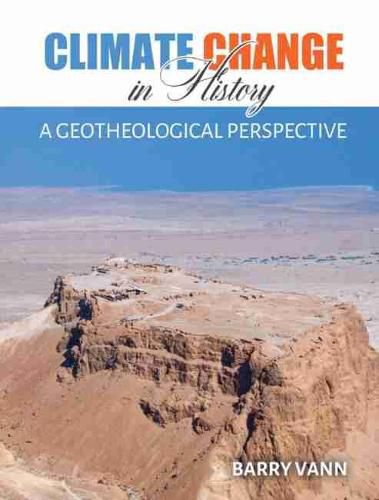Readings Newsletter
Become a Readings Member to make your shopping experience even easier.
Sign in or sign up for free!
You’re not far away from qualifying for FREE standard shipping within Australia
You’ve qualified for FREE standard shipping within Australia
The cart is loading…






Historical evidence from the Near East points to a rich reservoir of climate information. For instance, King Herod of Judea built a fortress and two palaces on a lofty plateau called Masada. The high plateau overlooks the Dead Sea from the eastern edge of the Judean Desert. During Herod’s time, climbing to the top of the plateau was not easy, so the King thought the high, level land would make an excellent haven during armed revolts. Herod and his would-be defenders had ample storehouses for food and cisterns to collect rainwater; the king’s refuge even boasted a bathhouse. Today, there is insufficient rainfall to support even a small assemblage of people on Masada, let alone a village of about 30 people who were able to withstand a year-long siege by a determined Roman legion.Encouraged by the example of Masada, historical geographer Barry Vann digs deeper into the ancient written texts of the region. To frame the study of ancient weather and climate, Vann’s Climate Change in History: A Geotheological Perspective provides a readable discussion on the complexity and historicity of climate change. Climate Change builds on existing studies and well established climate epochs or time periods by casting a light on overlooked weather imagery in sacred texts. Vann demonstrates how the ancient people of the eastern Mediterranean culture area understood and interpreted weather and climatic conditions. Scripture gives us a human perspective on what paleoclimatologists otherwise provide in abstract scientific jargon.
Even so, many believe that the Bible does not address climate change. It is true that the Bible does not talk directly about climate change as we understand it, but it does mention a wide array of weather phenomena that can be placed into time periods. This insight can prove valuable in any discussion on the complexity, historicity and the persistence of climate change.
$9.00 standard shipping within Australia
FREE standard shipping within Australia for orders over $100.00
Express & International shipping calculated at checkout
Historical evidence from the Near East points to a rich reservoir of climate information. For instance, King Herod of Judea built a fortress and two palaces on a lofty plateau called Masada. The high plateau overlooks the Dead Sea from the eastern edge of the Judean Desert. During Herod’s time, climbing to the top of the plateau was not easy, so the King thought the high, level land would make an excellent haven during armed revolts. Herod and his would-be defenders had ample storehouses for food and cisterns to collect rainwater; the king’s refuge even boasted a bathhouse. Today, there is insufficient rainfall to support even a small assemblage of people on Masada, let alone a village of about 30 people who were able to withstand a year-long siege by a determined Roman legion.Encouraged by the example of Masada, historical geographer Barry Vann digs deeper into the ancient written texts of the region. To frame the study of ancient weather and climate, Vann’s Climate Change in History: A Geotheological Perspective provides a readable discussion on the complexity and historicity of climate change. Climate Change builds on existing studies and well established climate epochs or time periods by casting a light on overlooked weather imagery in sacred texts. Vann demonstrates how the ancient people of the eastern Mediterranean culture area understood and interpreted weather and climatic conditions. Scripture gives us a human perspective on what paleoclimatologists otherwise provide in abstract scientific jargon.
Even so, many believe that the Bible does not address climate change. It is true that the Bible does not talk directly about climate change as we understand it, but it does mention a wide array of weather phenomena that can be placed into time periods. This insight can prove valuable in any discussion on the complexity, historicity and the persistence of climate change.